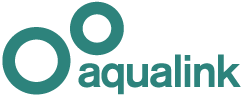While it may be fun to feed native animals such as ducks and magpies, it does them more harm than good. The Whitehorse Community Local Law 2024 ( PDF 973.95KB) S6.7 does not allow you to feed birds on Council land.
There is nothing we can feed wildlife that can adequately replace their own natural diet. The city's local open spaces such as parks, bush-land reserves, vegetated road verges and wildlife gardens provide an abundance of natural foods and habitat for local wildlife.
Why We Should Not Feed Native Animals
Feeding inappropriate food to native birds can cause many problems:
- It can make them sick and die a premature or painful death
- Native animals ‘gorging’ themselves on human food stop eating their natural foods, which are more nutritious and they can then become malnourished. Birds can choke on wads of bread.
- If young native animals are not taught by their parents how to forage for natural foods, the young risk starvation
- Artificial feeding can keep unhealthy animals alive which can cause other native animals and humans become sick. The possibility of viral, fungal or bacterial diseases being spread increases when large numbers of birds congregate at a feeding site
- The natural cycles of migration (which are largely determined by seasonal food supplies) may be disrupted when other food is readily available year-round
- Wildlife can become aggressive towards people when they become dependent on food and expect to be fed
- Cockatoos, corellas and galahs can chew fence posts and other wooden housing fixtures if they are fed birdseed and do not exercise their beaks to find food from acacias, eucalypts and other vegetation. Since they are only exercising their beaks and not eating the wood, any form of wood coating is unlikely to stop them
- Food can become stale and grow fungi that are poisonous to the wildlife that eats it
- Bread thrown into the waterways contributes to the high nutrient levels that promote the growth of blue green algae
- Populations of introduced species such as the Common (Indian) Myna or pigeons will grow to large flocks and compete with native birds for habitat and produce a concentration of bird droppings in public places
- Rats and mice often infest areas where wildlife is being fed, due to leftover food
- Feeding areas make wildlife an easy target for predators like foxes, dogs and cats
- Creating feeding areas often leads to excessive wildlife numbers in places too small to accommodate them
- When wildlife do not contribute to the food chain by following their natural diet, it can lead to environmental problems such as a decrease of insect consumption, pest plant invasion, and loss of indigenous plants.
Feeding Wildlife Naturally
Instead of putting food out for wildlife in your gardens, plant indigenous plants (native plants local to Whitehorse) that produce flowers, fruits and/or seeds to encourage local wildlife to feed naturally. Put out water in a birdbath using a pedestal or one hanging from a tree or pergola that you can clean regularly.
Visit the Gardens for Wildlife web page to find out more about how to support local wildlife.
More Information
For more information about feeding native birds, contact:
- The Department of Energy, Environment and Climate Action (DEECA) 136 186
- Wires







